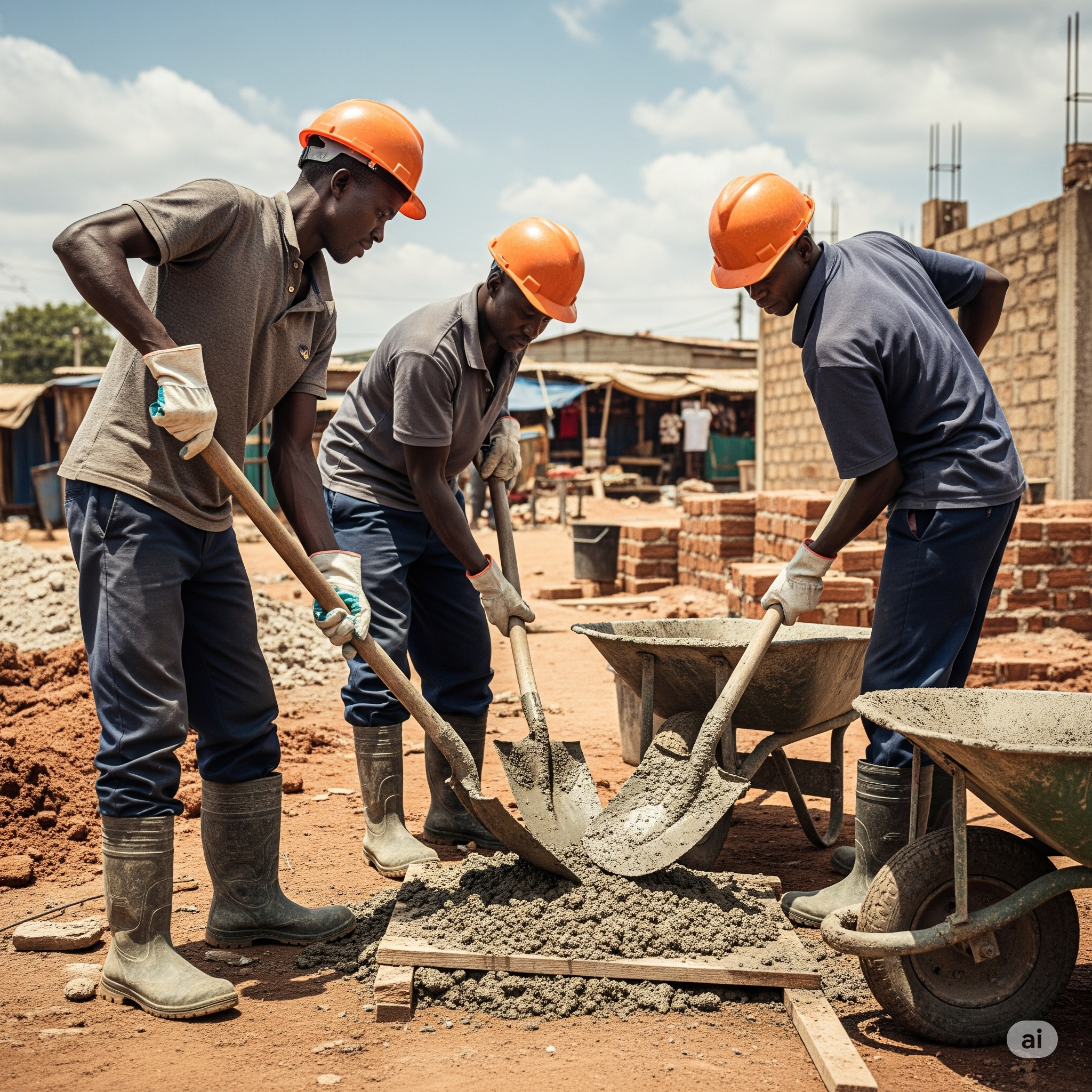Concrete is the backbone of nearly every construction project in Kenya from slabs and foundations to fencing posts and water tank platforms. While ready-mix concrete is ideal for large-scale builds, manual mixing remains the go-to for most small to mid-sized residential sites.
Whether you’re working in peri-urban areas like Juja or remote locations like Matuu, this guide offers a step-by-step breakdown on how to mix concrete by hand safely and correctly.
1. Why Manual Concrete Mixing Remains Popular
- No machinery or electricity required
- Ideal for remote or off-grid construction
- Budget-friendly for small-scale tasks
- Suitable for simple structures like tank stands and paved paths
(See: DIY Tank Stand Construction in Kenya)
2. Common Concrete Mix Ratios for Residential Use
For general-purpose work like slabs or foundations, the standard ratio is:
1:2:3 – Cement : Sand : Ballast
This ratio is commonly used for:
- House foundations
- Fence posts
- Tank bases
- Small outdoor structures
For high-moisture areas or heavier loads, use a stronger mix like 1:1.5:3. If you’re building on wet or unstable ground, review proper construction site drainage planning.
3. How to Mix Concrete Safely by Hand
Tools Required:
- Spade or shovel
- Clean water container
- Measuring buckets (or jerricans)
- Mixing surface (plastic sheet, metal sheet, or wheelbarrow)
- Basic PPE (gloves, boots, dust mask)
Step-by-Step Process:
- Measure dry materials using equal-volume containers.
- Mix dry components until color and texture are consistent.
- Form a central hollow, add water gradually, and fold in the dry mix.
- Mix thoroughly until the result is paste-like and uniform.
- Use immediately concrete begins to set within 30–45 minutes.
4. Safety Tips for Manual Mixing
- Wear gloves and boots to avoid burns and cement irritation
- Use a dust mask when handling dry cement
- Mix on a clean surface, never directly on soil
- Keep clean water nearby for spills or splashes
- Avoid overexposure to wet concrete rinse skin promptly
Sites that also use solar lighting systems, IBC tanks, or temporary pump setups need even greater attention to wet zones and electrical safety. (See: DIY Solar Lighting Systems for Sites in Kenya)
5. Mistakes to Avoid
- Over-watering the mix
- Using muddy or unclean mixing surfaces
- Leaving concrete unused for too long
- Ignoring PPE like gloves and eye protection
6. Tips for Tank Bases and Outdoor Foundations
If you’re mixing concrete for tank bases, gazebo floors, or pergola footings, always reinforce with mesh or rebar. Consider pairing concrete with natural materials as shown in Mixing Timber and Stone in Compound Design
Manual concrete mixing is simple, affordable, and highly effective for Kenya’s small-scale residential projects. With the right mix ratios, preparation, and safety gear, you can produce strong concrete suited for a range of tasks—from water tank stands to walkways and foundation pads.
When paired with good drainage design and proper curing practices, manually mixed concrete can serve as reliably as any ready-mix option.
Explore More:

